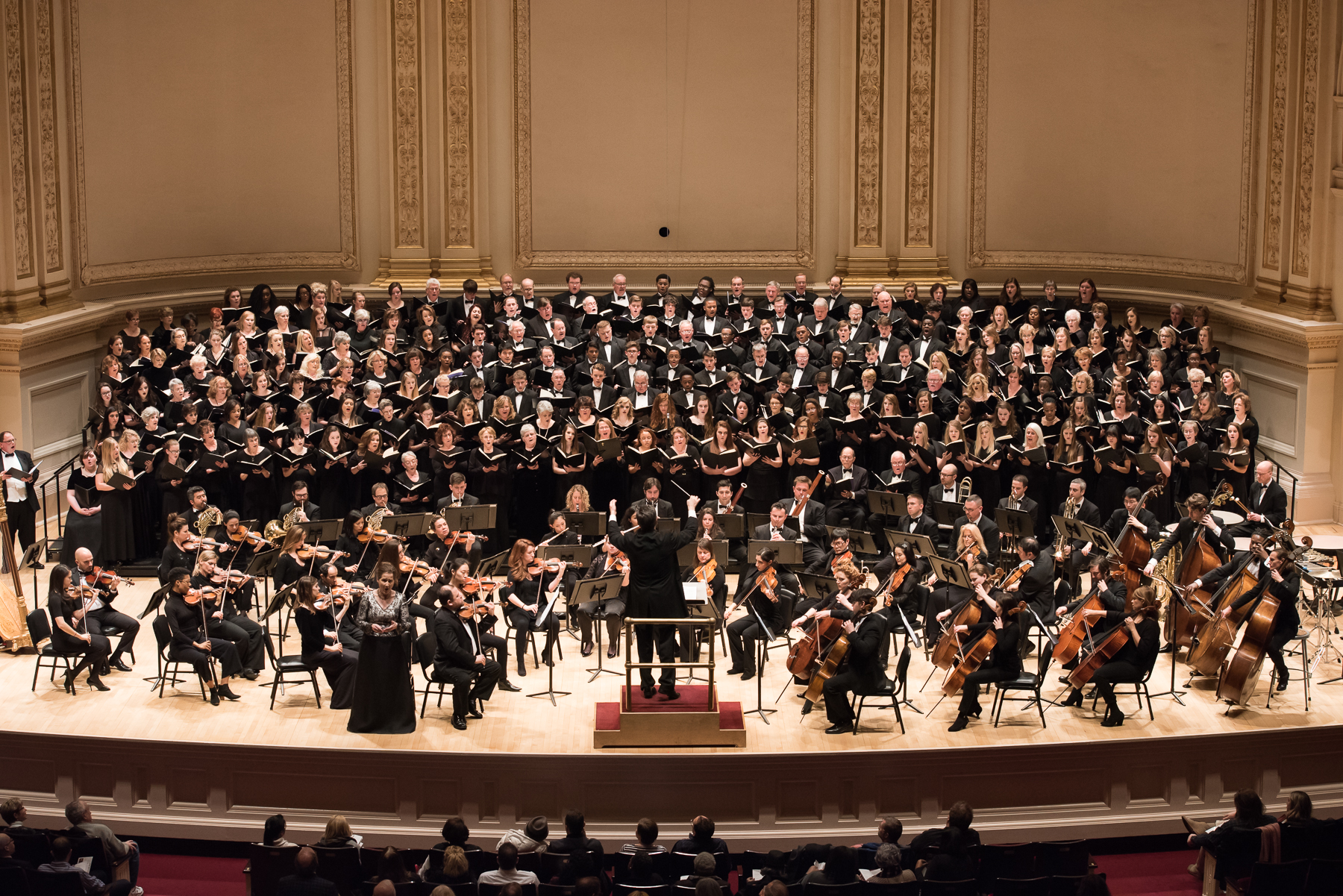Distinguished Concerts International New York (DCINY) presents Requiem for the Living: The Music of Dan Forrest
Distinguished Concerts Orchestra; Distinguished Concerts Singers International
Jo-Michael Scheibe, DCINY guest conductor; James M. Meaders, DCINY Associate Artistic Director and conductor
Dan Forrest, DCINY Visiting Composer
Viola Dacus, mezzo-soprano; Tony Burdette, tenor
Stern Auditorium, Carnegie Hall, New York, NY
January 19. 2016
On January 19, 2016, Distinguished Concerts International New York (DCINY) presented a concert at Stern Auditorium at Carnegie Hall featuring the music of Dan Forrest. While Mr. Forrest is a highly regarded choral composer, he is not what one would call a “household name”. It is his work Requiem for the Living that has put his name on the map, so to speak. This piece had its New York premiere at this same venue in a DCINY concert in 2014, at which this reviewer was present. It made such an impression that one can reasonably assume that this success led to the presentation of this concert.
For this event the Distinguished Concerts Singers hailed from South Carolina, Florida, Wyoming, Mississippi, Utah, Texas, California, Indiana, Canada, Oklahoma, Kentucky, and “individual singers from around the globe.” Recalling how I was moved by Requiem for the Living, I was looking forward to hearing more works from this very talented composer.
Conductor Jo- Michael Scheibe took to the stage to conduct Mr. Forrest’s In Paradisum, which opened the concert. It is an approximately thirteen-minute work, which was written a few years before Requiem for the Living. The text uses verses from the Bible (King James version) – Psalm 116:15, John 14:2-3, Revelation 21:4, and Luke 23:43.
In Paradisum opens with a sequence of massive fortissimo chords, in what the composer refers to as “pillar chords.” It is an apt description, as most of the work makes reference to these chords. It was an arresting beginning. Mr. Forrest’s setting of the text brings the potency of the words to life with consummate sensitivity, and his orchestration deepened the impact of each word. One might expect the work to end with the triumphant cry of the last words from Luke 23:43 – “In Paradise” – but Mr. Forrest had different plans. As he explained in his program notes, “eternity calls to the listener from the heavens,” and to illustrate this, the music fades away to complete silence. The effect of the fading to this listener was more one of being returned to Earth after a journey to Heaven, as if one had been shown the glory and brilliant light of the next life in advance, before receding from view. Maestro Scheibe was the “tour guide” par excellence as he led the orchestra and chorus with the sure expertise one would expect from a musician of his credentials.
It was a powerful, moving performance. Even the most ardent non-believers would have pause to reconsider their stance after hearing this majestic work.
Mr. Forrest has an undoubted gift for writing beautiful music. He does not resort to gimmicks or attempt to “reinvent the wheel” musically. His harmonic language is completely tonal, and he eschews needless complexity. The music world is filled with cynics who call such an approach limiting, but nothing could be further from the truth! It is what Mr. Forrest does with this so-called “simplistic” approach that is truly magical. To borrow a current expression, “Haters gonna hate!” This listener appreciates the courage of Mr. Forrest’s conviction in his style with admiration for the skill with which he writes.
The Te Deum followed. Cast in three movements (Praise to the Trinity, Prayers, Praise to Christ), the text comes largely from the Book of Common Prayer, with additions from the Psalms as well. The final movement was this listener’s favorite, with changing meters that heightened the tension before returning to the calm unifying theme. The sublime Psalm of Ascension ended the half.
As previously stated, I had the pleasure of reviewing the New York premiere of Requiem for the Living two years ago. Interested readers can follow the link for more information about the work and my impressions- DCINY Life and Liberty in Review. The first thing that I noticed was the conductor (James M. Meaders) and the mezzo-soprano soloist (Viola Dacus) were the same as last time (and several of the participating choruses as well), so I was especially interested in hearing what their experience was going to bring to this performance. I was pleased that this latest edition exceeded the high bar set by the earlier performance. Maestro Meaders was in full command – Vanitas Vanitatum had even more bite and driving intensity, the Sanctus had a feel of stars twinkling in the night sky, and the Lux aeterna was quite ethereal. Ms. Dacus was every bit as radiant as in 2014, and the luster of her voice in the Agnus Dei was heartbreakingly beautiful. One must also recognize tenor soloist Tony Burdette for a fine job. Using the same formula as in the In Paradisum, the music fades away to nothingness. When Maestro Meaders finally set the baton down after extended silence and slowly turned to the audience, they burst into thunderous applause.
Mr. Forrest joined the performers on the stage and the ovations escalated, continuing for several minutes. He undoubtedly made countless new “believers” in his music, and this listener for one is looking forward to hearing more works from him. Congratulations to the performers and to the composer. It was a memorable night for all.

